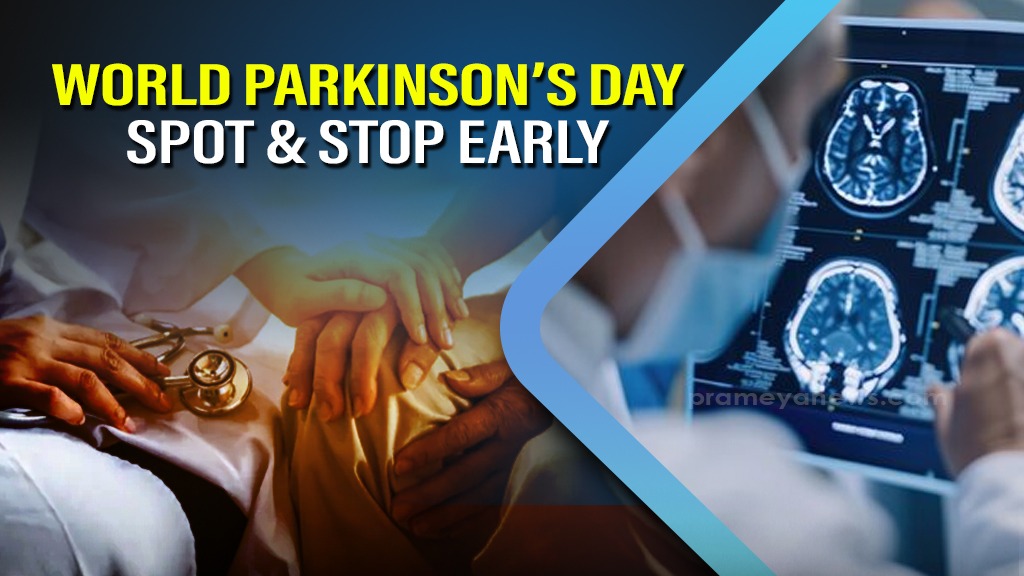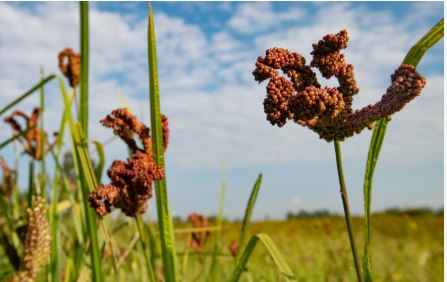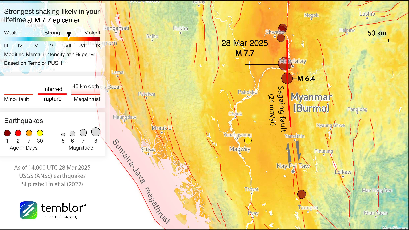World Parkinson's Day: About Symptoms, Diet & Exercise
Today, April 11th, marks World Parkinson's Day, an important occasion to raise awareness about a condition that affects nearly 10 million people globally. Parkinson's disease is a progressive neurological disorder primarily known for affecting movement, but its effects are often far more wide-ranging. While many associate Parkinson's with tremors and stiffness, it often starts earlier with subtle signs people miss. Recognising these clues is crucial, as timely diagnosis and proactive care, including lifestyle strategies like diet and exercise, can significantly slow down the disease's progression and help individuals maintain a better quality of life.
Join the Whatsapp Channel to Get News updates in english
Understanding Parkinson's Disease
Parkinson's disease occurs when certain nerve cells (neurons) in the brain gradually break down or die. Many symptoms are due to a loss of neurons that produce dopamine, a vital chemical messenger. This dopamine reduction causes abnormal brain activity, leading to impaired movement and other symptoms associated with the disease. While its exact cause remains unclear, factors like age, genetics, and environmental exposures are known to increase risk. It's a chronic condition, which develops slowly and worsen over time.
Recognising Early Warning Signs
The classic motor symptoms of Parkinson's – tremor (shaking, often starting in a limb), bradykinesia (slowness of movement), rigidity (stiffness of limbs or trunk), and postural instability (impaired balance and coordination) – typically appear later in the disease process. However, Parkinson's often sends out subtle signals years before these more obvious signs emerge. Paying attention to these early, often non-motor symptoms can lead to earlier diagnosis and intervention:
- Shrinking Handwriting (Micrographia): A noticeable change where handwriting becomes much smaller, and letters/words appear crowded together.
- Loss of Smell (Anosmia): Difficulty smelling certain foods or a complete loss of the sense of smell can precede motor symptoms by years.
- Trouble Sleeping / Acting Out Dreams: Intense physical activity during REM sleep, such as shouting, kicking, punching, or falling out of bed (known as REM Sleep Behavior Disorder or RBD), can be an early indicator.
- Constipation: Persistent and unexplained constipation that doesn't resolve with typical dietary changes or remedies.
- Stiffness or Rigidity: A feeling of tightness or stiffness in the limbs, neck, or trunk that isn't related to exercise or injury. Others might notice a lack of natural arm swing on one side when walking.
- Voice Changes (Hypophonia): Speaking more softly than usual, or in a flat, monotone voice, without realizing the change.
- Masked Face (Hypomimia): Reduced ability to show facial expressions, leading to a "masked" or serious look even when not intended.
- Stooped Posture: Developing a noticeable slouch, hunching, or leaning forward posture that wasn't present before.
- Dizziness or Fainting: Feeling dizzy or fainting upon standing up, often due to orthostatic hypotension (a drop in blood pressure).
- Fatigue: Overwhelming tiredness and lack of energy unrelated to exertion or lack of sleep.
- Mood Changes: Experiencing depression, anxiety, or increased irritability, sometimes linked to the underlying brain chemistry changes of Parkinson's, even before motor symptoms appear.
- Subtle Tremor: A slight shaking or tremor, perhaps in a finger, thumb, hand, or chin, often occurring at rest.
- Aches and Pains: Unexplained discomfort in limbs or joints, sometimes mistaken for arthritis or normal aging.
Noticing these early signs is very important because it helps people see a brain doctor sooner. While these symptoms can have other causes, their presence warrants investigation. Early intervention with medical therapies, lifestyle adjustments, and support can help manage symptoms more effectively and potentially slow the disease's progression.
Diet for Brain and Gut Health
While no specific diet can prevent or cure Parkinson's, research increasingly highlights the strong connection between nutrition, gut health, and brain function – the "gut-brain axis." What we eat directly influences this system. A healthy gut microbiome (the community of bacteria in our digestive tract) appears to support better brain function and may play a role in protecting against the type of nerve cell damage seen in Parkinson's.
Key dietary strategies focus on reducing inflammation and oxidative stress (damage from harmful molecules):
- Antioxidant-Rich Foods: Berries, leafy green vegetables (like spinach), nuts, and green tea are packed with antioxidants that help combat cell damage.
- Omega-3 Fatty Acids: Found abundantly in fatty fish (salmon, mackerel, sardines) and also in flaxseeds and walnuts, these healthy fats help reduce brain inflammation and support dopamine production.
- Mediterranean-Diet: This eating pattern, and having colourful fruits & vegetables, whole grains, legumes, nuts, seeds, olive oil, and fish, are recommended for its brain-protective benefits.
- Gut Health Support: Fiber-rich foods (whole grains, fruits, vegetables, legumes) nourish beneficial gut bacteria. Fermented foods like yogurt provide probiotics (live beneficial bacteria), while prebiotic foods like garlic and bananas feed these good bacteria.
- Foods to Limit: Experts generally advise reducing intake of processed foods, sugary drinks, excessive saturated fats (found in red meat and full-fat dairy), and potentially excess dairy, as these may promote inflammation. Limiting alcohol and choosing organic produce when possible are also suggested.
Movement as Medicine:
Alongside medication, exercise and movement therapy are essential components of Parkinson's management. Regular physical activity doesn't just improve physical health; it can help "rewire" the brain (neuroplasticity) and improve motor control, balance, mood, and overall quality of life. Various approaches show promise:
- Targeted Therapies: Programs like LSVT BIG (Lee Silverman Voice Treatment BIG) use exaggerated, large-amplitude movements to specifically combat the slowness (bradykinesia) and small movements characteristic of Parkinson's.
- Gait and Balance Training: Focuses on improving walking patterns, coordination, and stability to reduce the significant risk of falls. This might involve treadmill training, rhythmic cues, or exercises on varied surfaces.
- Strength Training: Using resistance bands, light weights, or body weight helps build muscle strength needed for daily activities, improving posture, mobility, endurance, and independence.
- Stretching and Flexibility: Daily stretching helps counteract muscle stiffness (rigidity), improving range of motion and making tasks like dressing easier.
- Aerobic Exercise: Activities like brisk walking, cycling, swimming, or water aerobics improve cardiovascular health, boost energy, enhance coordination, and can help alleviate depression and anxiety. Aiming for 20-30 minutes of moderate activity several times a week is often recommended.
- Dance Therapy: Engaging forms like tango or waltz improve timing, movement flow, spatial awareness, balance, and emotional well-being in a structured yet enjoyable way.
- Virtual Reality (VR): Interactive VR programs guide movement and challenge coordination in simulated environments, making therapy engaging and effective for reinforcing motor patterns and cognitive function.
- Yoga: Combines gentle, controlled movements with breathing and mindfulness, improving flexibility, posture, balance, and stress management.
Spotlight on Cycling
Cycling, in particular, has garnered significant research interest. Studies suggest that cycling, especially at a relatively high cadence (around 80-90 pedal revolutions per minute or RPM), can markedly reduce key motor symptoms like rigidity, tremor, and gait instability. The rhythmic, coordinated nature of pedaling is thought to help retrain the brain's motor pathways. Patients participating in structured cycling programs have shown measurable improvements in strength, walking speed, balance, and overall quality of life scores (like the PDQ-39 and MDS-UPDRS). Some evidence even suggests it might help delay motor function decline.
For safe cycling, experts advise starting slowly, aiming for the high cadence if possible, maintaining consistency (e.g., three sessions/week), using stationary bikes if balance is a concern, and always getting medical clearance before starting a new exercise routine.
Let’s act on Positive note.
Parkinson's disease presents significant challenges, but World Parkinson's Day serves as a powerful reminder that proactive steps can make a substantial difference. While research continues towards a cure, focusing on early symptom recognition, appropriate medical care, and evidence-based lifestyle strategies offers hope. Embracing a brain-healthy diet and incorporating regular, targeted exercise – potentially including beneficial activities like high-cadence cycling – can empower individuals living with Parkinson's to manage their symptoms, maintain independence, slow progression, and improve their overall quality of life. It's about taking control where possible and fostering a future filled with greater function and hope.



















































